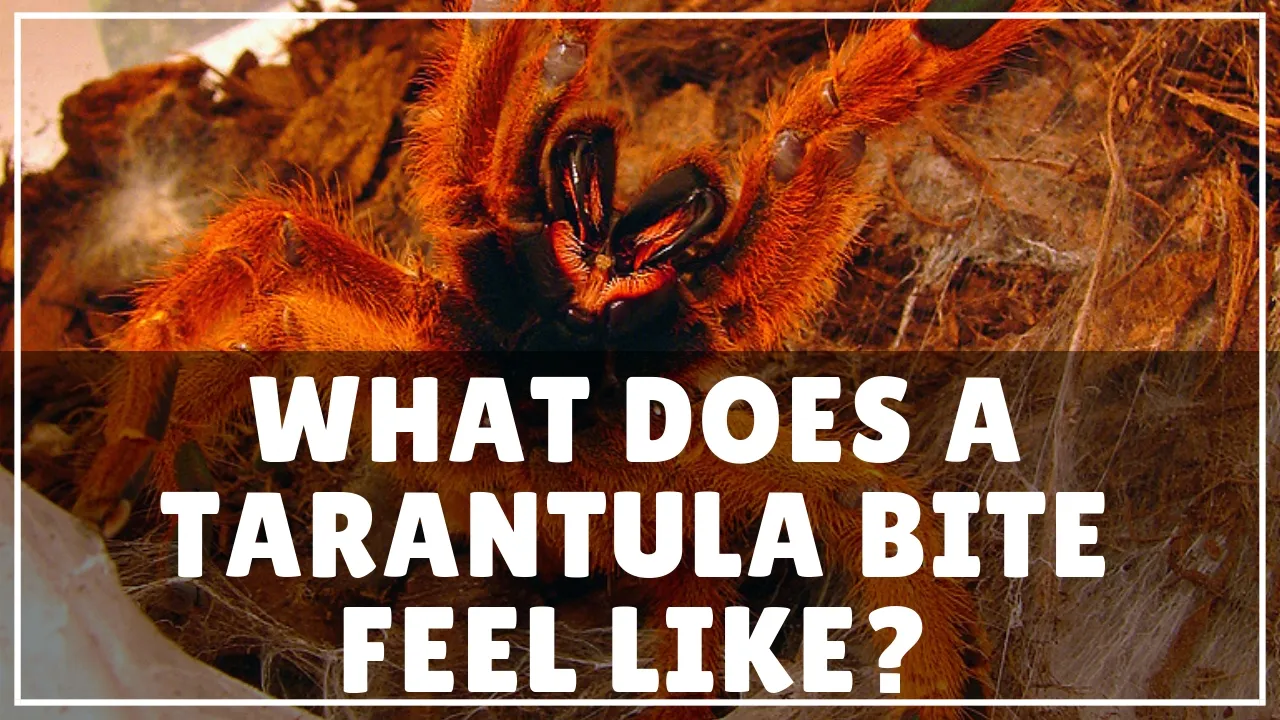Tarantula Bite Challenge The Top 5 Facts
The tarantula bite challenge, a dangerous trend, involves intentionally getting bitten by a tarantula. This challenge, often sensationalized on social media, poses significant health risks and should be avoided. This article delves into the frightening realities surrounding tarantula bites, debunking myths, and providing vital information on safety and prevention. The goal is to educate and discourage participation in such risky behavior, emphasizing the potential for serious health consequences.
The Venomous Nature of Tarantula Bites
Contrary to popular belief, tarantulas are venomous spiders, and their bites can be harmful. While not typically lethal to humans, their venom can cause a range of reactions, from mild discomfort to severe symptoms, depending on the species and individual sensitivity. The venom contains various toxins that can affect the nervous system and cause localized pain, swelling, and other complications. Understanding the venomous nature of these spiders is crucial in assessing the potential risks associated with a tarantula bite.
Severity of Venom

The severity of a tarantula bite depends on several factors, including the species of the tarantula, the amount of venom injected, and the individual’s reaction. Some bites may result in only minor pain and swelling, while others can cause more severe symptoms. The potency of the venom varies greatly among different tarantula species. Some species have a weaker venom, while others possess a more potent concoction that can cause more intense reactions. People who are allergic or have underlying health conditions are at a higher risk of experiencing serious complications. It’s important to recognize that the venom’s impact can vary significantly from person to person.
Allergic Reactions
Allergic reactions to tarantula bites can range from mild to severe. Some individuals may experience localized symptoms like redness, itching, and swelling at the bite site. However, more severe allergic reactions can manifest as hives, difficulty breathing, or even anaphylaxis, a life-threatening condition. If you experience any signs of an allergic reaction after being bitten, seek immediate medical attention. Allergies can occur even in people who have not had prior exposure to tarantula venom, making it impossible to predict who will have an allergic reaction.
Symptoms of a Tarantula Bite
The symptoms of a tarantula bite can vary widely but commonly include pain, swelling, redness, and itching at the bite site. Other possible symptoms include muscle cramps, nausea, vomiting, and in more severe cases, difficulty breathing and increased heart rate. These symptoms can appear within minutes or hours of the bite, depending on the individual’s reaction and the amount of venom injected. It’s essential to monitor the symptoms and seek medical attention if they worsen or if you experience any systemic reactions.
Common Signs

Common signs of a tarantula bite often include immediate pain, similar to a bee sting, followed by localized swelling and redness around the bite area. The skin might feel warm to the touch and become itchy. In some cases, small puncture marks may be visible. The pain can radiate from the bite site, and some individuals may experience muscle cramps or spasms. Mild systemic symptoms, like nausea or headache, may also occur. Recognizing these signs is crucial for timely intervention and treatment.
Rare but Possible Complications
Although rare, tarantula bites can lead to more serious complications, particularly in individuals with allergies or underlying health conditions. These complications can include severe allergic reactions, such as anaphylaxis, characterized by difficulty breathing, swelling of the throat, and a sudden drop in blood pressure. Other possible complications include secondary infections at the bite site, severe muscle cramps, and, in rare cases, neurological symptoms. Seeking immediate medical attention is essential if you experience any of these severe complications.
First Aid Measures for Tarantula Bites
If you are bitten by a tarantula, immediate first aid measures can help minimize the impact. First, stay calm and move away from the spider to prevent further bites. Clean the bite area gently with soap and water. Apply a cold compress to reduce swelling and pain. If possible, elevate the affected limb to help reduce swelling. Monitor for any signs of an allergic reaction, such as difficulty breathing or swelling of the face or throat. Seeking medical attention is recommended after any tarantula bite, especially if the symptoms worsen or if there are any signs of a serious reaction.
Immediate Steps

The immediate steps to take after a tarantula bite include staying calm and removing yourself from the area to avoid further bites. Wash the bite area thoroughly with soap and water to reduce the risk of infection. Apply a cold compress or ice pack to the bite site to help reduce pain and swelling. Keep the affected limb elevated to minimize swelling. Observe for any signs of a serious reaction, such as difficulty breathing, dizziness, or rapid heart rate. Seeking medical attention immediately is advised to receive appropriate treatment and prevent potential complications.
Medical Treatment and When to Seek It
Medical treatment for a tarantula bite may include pain relief medication, antihistamines for allergic reactions, and, in severe cases, epinephrine for anaphylaxis. The doctor may also evaluate the bite for any potential secondary infections and prescribe antibiotics if necessary. Seek medical attention immediately if you experience severe symptoms, such as difficulty breathing, chest pain, or severe swelling. Prompt medical care ensures proper diagnosis and treatment, reducing the risk of complications. It is always better to err on the side of caution when dealing with tarantula bites.
Long-Term Effects and Recovery
In most cases, the long-term effects of a tarantula bite are minimal, and individuals recover fully within a few days or weeks. However, some people may experience lingering pain, sensitivity, or skin discoloration at the bite site. In rare cases, severe reactions can lead to more prolonged health issues. The recovery process depends on various factors, including the severity of the bite, the individual’s health, and the medical treatment received. Follow-up care may be necessary to manage any persistent symptoms and ensure complete recovery.
Potential Health Issues

Potential health issues that might arise from a tarantula bite include skin infections at the bite site, allergic reactions, muscle cramps, and, in rare cases, neurological symptoms. Severe allergic reactions can cause breathing difficulties and require immediate medical intervention. Individuals with pre-existing health conditions may experience more severe reactions to the venom. It’s essential to monitor symptoms closely and seek medical attention to prevent complications and ensure timely treatment.
Psychological Impact of Tarantula Bite
Experiencing a tarantula bite can also have psychological effects, often involving fear and anxiety. The physical pain and the uncertainty about the bite’s severity can lead to stress, worry, and even panic. Individuals may develop a phobia of spiders or experience post-traumatic stress symptoms. Seeking mental health support is essential to cope with these psychological challenges. Counseling, therapy, and support groups can help individuals process their experiences and manage their emotional responses.
Fear and Anxiety
Fear and anxiety are common psychological responses to a tarantula bite. The experience can trigger a heightened sense of vulnerability and unease. Some individuals may develop a fear of spiders (arachnophobia) or experience panic attacks when they encounter spiders or related stimuli. Managing fear and anxiety involves recognizing the triggers, developing coping strategies (such as deep breathing or relaxation techniques), and, if needed, seeking professional help. Therapy and counseling can provide valuable support in dealing with these emotional challenges.
Preventing Tarantula Bites

Preventing tarantula bites involves taking specific safety measures, especially if you live in an area where tarantulas are prevalent or work with these spiders. Avoid handling tarantulas unless you are a trained professional and use appropriate protective gear. Be cautious when reaching into dark or enclosed spaces where tarantulas may hide. Educate yourself on the habitats of tarantulas in your area. It is crucial to prioritize safety and minimize the risk of encountering these spiders, especially avoiding the dangerous trend of the tarantula bite challenge.
Safety Measures
Safety measures to prevent tarantula bites include avoiding handling tarantulas unless you are a trained professional with the necessary protective gear, such as gloves and long sleeves. Be cautious when working outdoors, particularly in areas where tarantulas are known to live, and avoid reaching into dark, enclosed spaces without checking for spiders first. Regular inspection of your home and surroundings can help identify and remove potential spider habitats. Practicing these safety measures helps minimize the risk of accidental encounters and bites.
Habitat Awareness
Habitat awareness is essential for preventing tarantula bites. Learn about the habitats of tarantulas in your area, including the types of environments where they are commonly found. Tarantulas often reside in burrows, under rocks, and in dense vegetation. Be mindful of these habitats, and take precautions when exploring or working in such areas. Educating yourself about their behavior and preferred environments is key to reducing the risk of encountering these spiders and avoiding bites. Always prioritize safety and respect the tarantula’s natural habitat.
Debunking Myths About Tarantula Bites

Several myths surround tarantula bites, often leading to misunderstandings about their potential dangers. One common misconception is that all tarantula bites are deadly. While the bites are venomous, they are rarely fatal to humans. Another myth is that tarantulas are aggressive and will attack humans on sight. In reality, tarantulas are generally docile and only bite when threatened. Debunking these myths is crucial to promote a better understanding of tarantulas and reduce unnecessary fear. Always rely on accurate information from reputable sources.
Common Misconceptions
Common misconceptions about tarantula bites include that they are always fatal, or that the venom is extremely potent and causes instant death. In reality, the venom of most tarantulas is not life-threatening to humans. Also, it is often believed that all tarantula species are highly aggressive. In fact, tarantulas are typically more inclined to flee than to attack unless they feel threatened. Debunking these misconceptions helps individuals avoid unnecessary fear and anxiety surrounding these spiders.
The Reality of the Challenge
The tarantula bite challenge is a dangerous trend with potentially severe health consequences. Participating in this challenge puts individuals at risk of venomous bites, allergic reactions, and various other complications. The lack of regulation and control in these challenges further increases the risk, making it a risky and irresponsible behavior. Prioritizing safety and avoiding such challenges is crucial to protect one’s health and well-being. Always rely on evidence-based information and make informed decisions to safeguard your health.
In conclusion, the tarantula bite challenge is a dangerous trend that poses significant health risks. The Top 5 Scary Facts about tarantula bites highlight the venomous nature of these bites, the potential for allergic reactions, and the importance of immediate first aid and medical treatment. By understanding the risks and debunking myths, individuals can make informed decisions and prioritize their safety. Always avoid such dangerous challenges and seek accurate information to ensure your well-being.
